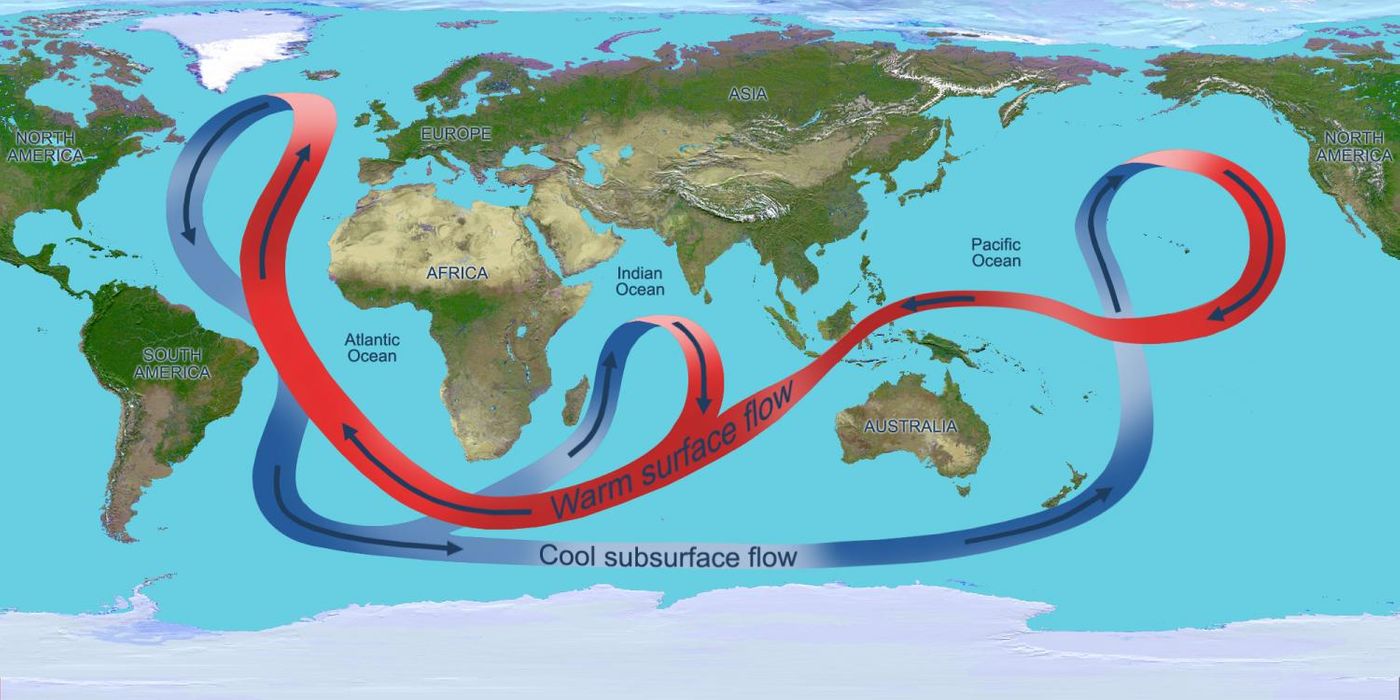What does weakening ocean circulation mean for us?
What happens when the ocean doesn’t circulate as it should? Though you might not realize it, the natural circulation of the ocean, particularly the Atlantic Ocean, is extremely important in regulating global climate, marine ecosystems, and regional weather patterns. Known as the Global Ocean Conveyor Belt, the Atlantic’s natural currents circulate the depths of the ocean, thus mixing nutrients and waters around the planet. As explained by the Woods Hole Oceanographic Institution (WHOI), this organic system, called the Atlantic Meridional Overturning Circulation (AMOC), brings “warm, salty Gulf Stream water to the North Atlantic where it releases heat to the atmosphere and warms Western Europe. The cooler water then sinks to great depths and travels all the way to Antarctica and eventually circulates back up to the Gulf Stream.” The consistency of the AMOC is imperative for the normalcy of our planet’s functioning - so what if that normalcy is jeopardized?
New research published in Nature from WHOI and University College London suggests that something is out of whack with the system - and has been since the mid-1800s. The scientists figured this out by analyzing past records of marine sediments and looking to see when and where the largest sediment grains were found. As the logic goes, the bigger the sediment grains found in sediment samples, the stronger the currents must have been at that specific time in history to carry them. This technique allowed the team of researchers to create a model of near-surface ocean temperatures in places where the strength of the Atlantic Meridional Overturning Circulation (AMOC) impacts ocean temperatures.
And what they found doesn’t look good: the AMOC is at rock bottom, the weakest it’s been in the past 1,600 years. "Our study provides the first comprehensive analysis of ocean-based sediment records, demonstrating that this weakening of the Atlantic's overturning began near the end of the Little Ice Age, a centuries-long cold period that lasted until about 1850," said Dr. Delia Oppo, co-author of the study.
Lead author Dr. David Thornalley chimes in, explaining the hypothesis that when the North Atlantic began to warm near the end of the Little Ice Age, the influx of freshwater from melting ice sheets and glaciers messed up the AMOC. All that freshwater worked to dilute the surface seawater and made it less dense. Less dense water doesn’t sink as it should, and thus there was a chink in the system. And if all this was the result of warming and melting glaciers hundreds of years ago...well, you can follow the pattern for the future we’re heading toward.
"Combined, these approaches suggest that the AMOC has weakened over the past 150 years by approximately 15 to 20 percent," says Thornalley.
The implications of the study’s findings are, to say the least, alarming. The authors explain that, following their model, if the Global Ocean Conveyor Belt system continues on its downward fall, much of the globe will see significant changes in weather patterns. Another likely consequence of the weakening system is drastic rising sea levels on the East Coast of the US. Nevertheless, the researchers stress that much more investigation is needed in order to fully understand the complexity of the AMOC and its history, in order to properly predict what’s to come.
Sources: Nature, Woods Hole Oceanographic Institution, The Washington Post









